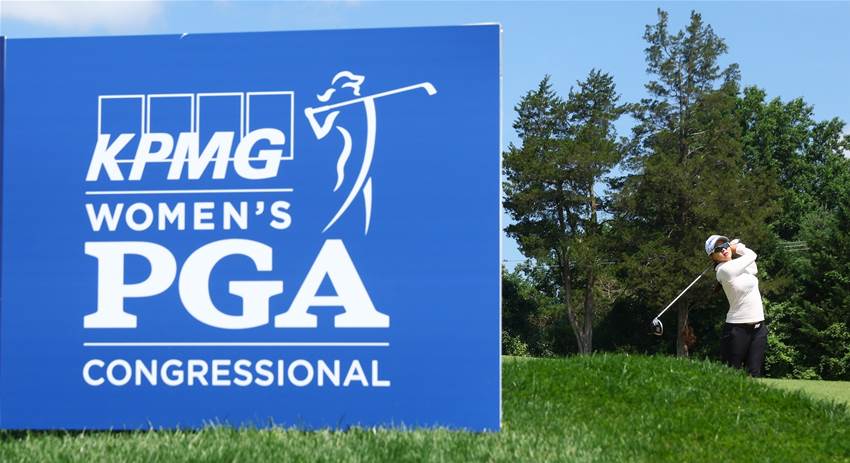I don’t know how many ways there are to say this, but the game’s best women players deserve better. Much better.
The last couple of hours of the KPMG Women’s PGA could hardly have been more compelling. The final few minutes could barely have been more embarrassing.
After a thrilling final nine holes, and a roller coaster final four, winner In Gee Chun (now a three-time major champion) apparently wasn’t afforded the opportunity to even sign her scorecard before a rushed, made for TV trophy presentation which reeked of amateur hour.
It would be an unthinkable scenario in men’s golf though, in a way, it was a fitting end to a bizarre week of contradictions at Congressional.
It started with a Tuesday announcement the purse for the tournament had been doubled.
Great news and well received by players, fans and media alike.
"Does anybody who knows anything about golf believe the top LPGA players are only 5.6 percent as interesting to watch as the top men? Of course not." - Rod Morri.
It quickly descended into farce in terms of the limited amount of TV coverage the tournament received, capped off by the hurried presentation ceremony.
For one of the most important titles the women play for on one of America’s most prestigious tournament venues, there was a total of 14 hours coverage for the entire week on U.S. television. In Australia, we got one hour less.
Compare that to the men’s equivalent at Southern Hills last month where the U.S. had 30 hours of network broadcast time (Australia 24 hours on pay TV) as well as various featured groups and driving range coverage.
(According to media reports at the time, the PGA of America was claiming nearly 250 hours total coverage for the week across broadcast, digital and cable.)
A back of the envelope calculation suggests the women got about 5.6 percent of the total coverage the men received, something to think about for those who say people want to watch men more than women.
That may be partially true, but it is also skewed by the fact people have way more opportunity to watch men.
Think about it this way: does anybody who knows anything about golf believe the top LPGA players are only 5.6 percent as interesting to watch as the top men?
Of course not. It’s an absurd proposition and only the malicious or genuinely stupid would support it.
So how is the disparity in coverage justified? It can’t be, despite claims of contractual obligations, smaller viewing numbers and all the rest.
Nobody is suggesting complete parity but the difference in the numbers above show, at the very least, a lack of respect for what is an extremely good golf product.
There is a chicken and egg element to this discussion about whether increasing the amount of coverage of women’s golf would immediately increase viewing numbers.
While ‘immediate’ is unlikely, what might the impact be over time?
It would be nice to think that in the not too distant future we might get the chance to find out.
Related Articles

The Aussies at the U.S Women’s Open

Feature Story: Oakmont Unleashed













